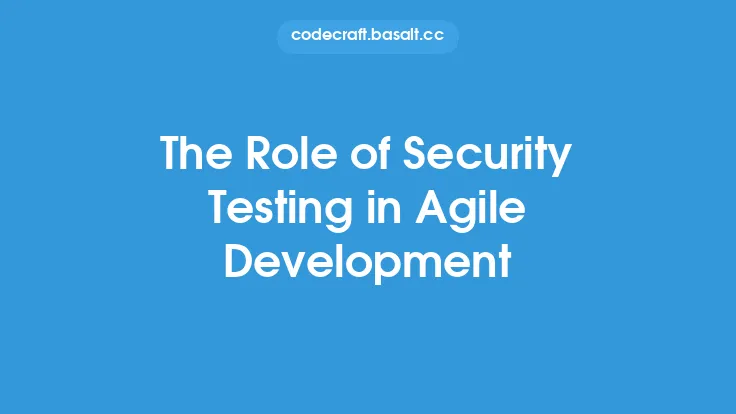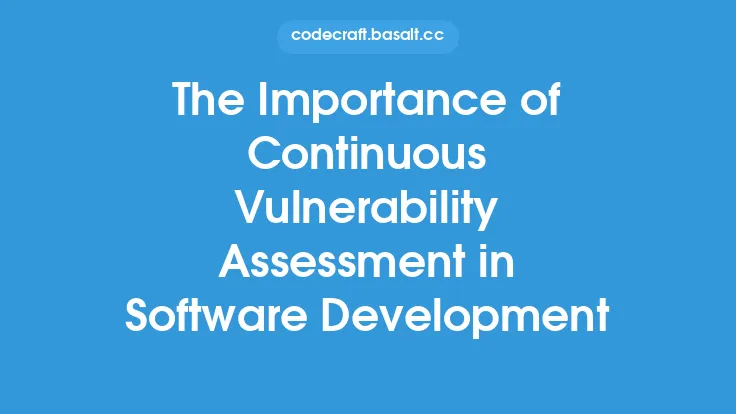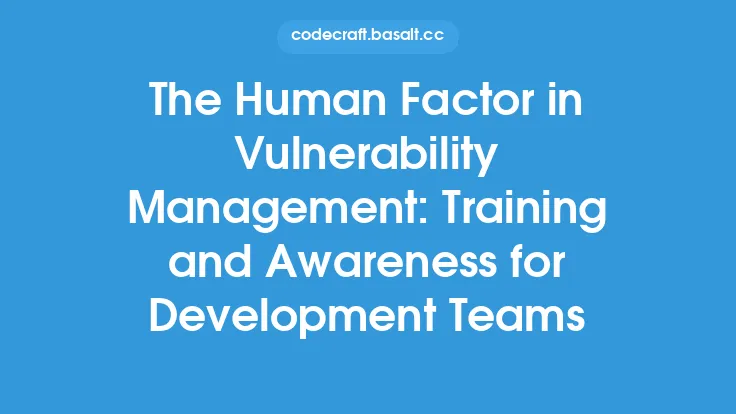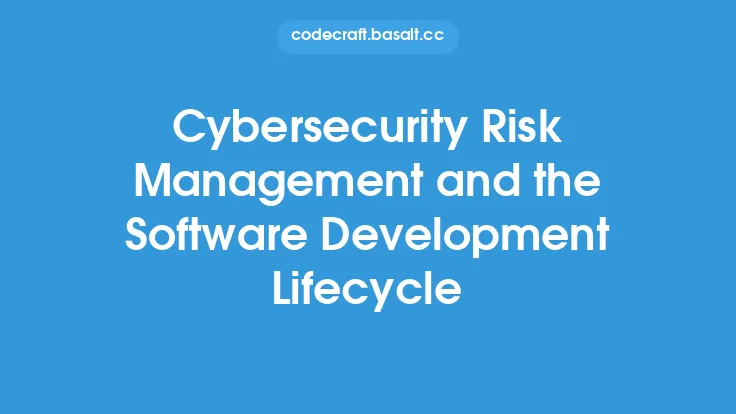In today's fast-paced and increasingly complex software development landscape, integrating security into the development lifecycle is no longer a luxury, but a necessity. The traditional approach of treating security as an afterthought, often resulting in costly and time-consuming remediation efforts, is being replaced by a more proactive and collaborative approach known as DevSecOps. At the heart of DevSecOps lies vulnerability management, a critical component that enables organizations to identify, prioritize, and remediate vulnerabilities throughout the development lifecycle. In this article, we will delve into the role of vulnerability management in DevSecOps, exploring its importance, key components, and best practices for effective integration.
Introduction to DevSecOps
DevSecOps is a cultural and technological movement that aims to bridge the gap between development, security, and operations teams. By integrating security into every stage of the development lifecycle, DevSecOps enables organizations to deliver secure software faster and more efficiently. This approach recognizes that security is not a separate entity, but an integral part of the development process. By shifting security left, organizations can identify and address vulnerabilities earlier, reducing the risk of breaches and minimizing the impact of security incidents.
The Importance of Vulnerability Management in DevSecOps
Vulnerability management is a critical component of DevSecOps, as it enables organizations to identify, prioritize, and remediate vulnerabilities throughout the development lifecycle. Effective vulnerability management involves a combination of people, processes, and technology, working together to ensure that vulnerabilities are detected and addressed in a timely and efficient manner. By integrating vulnerability management into DevSecOps, organizations can reduce the risk of security breaches, improve compliance, and enhance overall security posture.
Key Components of Vulnerability Management in DevSecOps
Several key components are essential for effective vulnerability management in DevSecOps, including:
- Vulnerability scanning and assessment: Automated tools and techniques are used to identify vulnerabilities in code, configurations, and dependencies.
- Prioritization and risk assessment: Identified vulnerabilities are prioritized based on their severity, impact, and likelihood of exploitation.
- Remediation and mitigation: Vulnerabilities are remediated or mitigated through code changes, configuration updates, or other measures.
- Continuous monitoring and feedback: Vulnerability management is integrated into the continuous integration and continuous delivery (CI/CD) pipeline, providing real-time feedback and enabling rapid remediation.
Integrating Vulnerability Management into the Development Lifecycle
To effectively integrate vulnerability management into DevSecOps, organizations should follow a structured approach, including:
- Shift-left security: Security is integrated into the development process from the outset, with security considerations factored into design, development, and testing.
- Automated vulnerability scanning: Automated tools are used to scan code, configurations, and dependencies for vulnerabilities, providing real-time feedback to developers.
- Developer training and awareness: Developers are trained and aware of secure coding practices, vulnerability management, and the importance of security in the development lifecycle.
- Security gates and checkpoints: Security gates and checkpoints are established throughout the development lifecycle, ensuring that vulnerabilities are identified and addressed before code is released to production.
Best Practices for Effective Vulnerability Management in DevSecOps
Several best practices can help organizations effectively integrate vulnerability management into DevSecOps, including:
- Implement a vulnerability management program: Establish a formal vulnerability management program, with clear policies, procedures, and responsibilities.
- Use automated vulnerability scanning tools: Leverage automated tools to scan code, configurations, and dependencies for vulnerabilities, providing real-time feedback to developers.
- Prioritize vulnerabilities based on risk: Prioritize vulnerabilities based on their severity, impact, and likelihood of exploitation, ensuring that the most critical vulnerabilities are addressed first.
- Continuously monitor and feedback: Continuously monitor the development lifecycle for vulnerabilities, providing real-time feedback and enabling rapid remediation.
Technical Considerations for Vulnerability Management in DevSecOps
From a technical perspective, several considerations are essential for effective vulnerability management in DevSecOps, including:
- Containerization and orchestration: Containerization and orchestration tools, such as Docker and Kubernetes, can help reduce the attack surface and improve vulnerability management.
- Cloud-native security: Cloud-native security tools and techniques, such as cloud security gateways and cloud workload protection platforms, can help protect cloud-based applications and infrastructure.
- Artificial intelligence and machine learning: Artificial intelligence and machine learning can be used to improve vulnerability management, enabling more accurate and efficient identification, prioritization, and remediation of vulnerabilities.
- API security: API security is critical in DevSecOps, as APIs can provide a vulnerable entry point for attackers. API security tools and techniques, such as API gateways and API security testing, can help protect APIs and prevent vulnerabilities.
Conclusion
In conclusion, vulnerability management plays a critical role in DevSecOps, enabling organizations to identify, prioritize, and remediate vulnerabilities throughout the development lifecycle. By integrating vulnerability management into DevSecOps, organizations can reduce the risk of security breaches, improve compliance, and enhance overall security posture. By following best practices, leveraging automated tools and techniques, and considering technical factors, organizations can effectively integrate vulnerability management into DevSecOps, ensuring the delivery of secure software faster and more efficiently.





